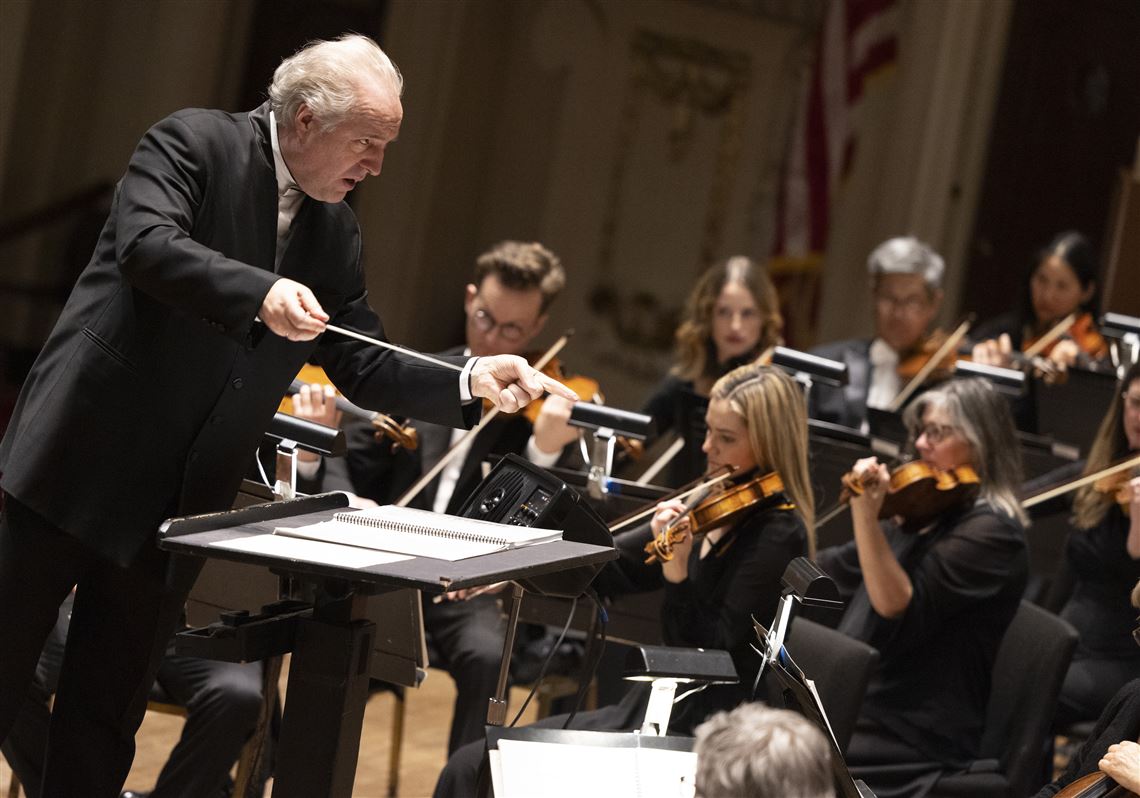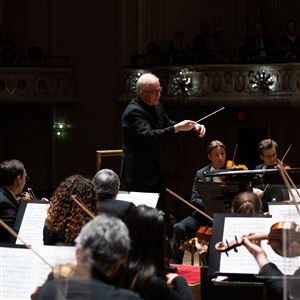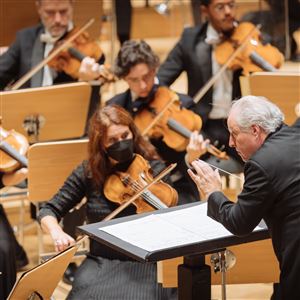Pittsburgh’s rivalry with Cleveland starts with football but runs deeper than sports.
The cities’ proximity to one another, their similar population sizes and their dual post-industrial economic reinventions in recent decades have bred an air of, shall we say, competition.
Well, the Steelers may be leading the Browns overall this century, but Cleveland’s orchestra sometimes dunks on the Steel City’s. (Yeah, I’m mixing metaphors — I’m not really a sports guy, much fun as it is to root for our guys on the field.)
The Cleveland Orchestra has about a $60 million budget compared to the Pittsburgh Symphony Orchestra’s roughly $30 million. Cleveland’s musicians are better paid, and like any industry this is perhaps the largest determining factor of attracting top talent.
In critical circles, Cleveland is considered one of the best if not the best ensemble in the country. Its peers are similarly top-funded orchestras New York, Philadelphia, Boston, Chicago, Los Angeles and San Francisco.
Pittsburgh, which starts musician base pay at about $110,000, belongs to the next budget tier, but both cities’ comparably lower costs of living are an added bonus.
Game on.
Orchestras are too dignified to “compete” like sports teams, which seems to me a bit of a missed opportunity for drumming up local support for the performing arts. This past week, however, both orchestras gave standout performances in their home halls — how do the two stack up these days?
The Cleveland Orchestra
Cleveland’s concert Thursday was strongest in its transparency flexibility of timbre. What does that jargon mean? In essence, no one instrumental section played so loudly as to dominate the overall sound. At any given time it was possible to hear strings, winds, brass and percussion at once, which made for some delightful gradations in the sound palette.
Rhythmic precision, too, was absolute, less of a given even at the top levels of orchestral playing than one might expect.
Guest conductor Klaus Makela led the orchestra in music by French composer Darius Milhaud (“Le Boeuf sur le toit,”a lighthearted, Brazilian-style romp), America’s George Gershwin (the frenetic Concerto in F for piano, with soloist Jean-Yves Thibaudet, who just played in Pittsburgh a couple of weeks ago) and Russia’s Igor Stravinsky (“The Rite of Spring,” which literally saw a riot at its premiere about 100 years ago.) Mr. Makela, a 28-year-old Finnish talent, was just named music director of the Chicago Symphony Orchestra, causing quite a furor in orchestra world.
The “Rite” in particular is a good test of a conductor’s and orchestra’s mettle. It’s exceedingly complex, rhythmically, and can be an invigorating, primitive force when delivered well.
Mr. Makela and Cleveland were locked in and conjured a robust, tempestuous sound that gripped the ears and soul alike — it was a display of consummate professionalism, lacking only in the sort of interpretive twists and surprises that can make a familiar work leap off the stage in a new light.
Pittsburgh Symphony Orchestra
Pittsburgh’s Friday performance was a bit messier. The first half of the concert featured the Russian composer Rachmaninoff’s third piano concerto, a piece of music so technically challenging that the pianist who was supposed to play the work’s first performance, in 1909, backed out, saying that it wasn’t for him. (Chicken.)
In Pittsburgh, guest soloist Leif Ove Andsnes dispatched the work’s mechanical difficulties with seeming ease, backed by the full might of the orchestra. It wasn’t perfect. Woodwinds were behind Mr. Andsnes’ beat at times, and in certain moments the orchestra’s and brass’ enthusiasm led them to cover the piano in some of the louder passages.
Still, something about the extremities of dynamic contrasts made this performance special. The softest moments weren’t just quiet, they felt more velvet and gossamer, and the stronger passages were downright brawny, reaching from the stage to clap the ears with sound and fury.
Plus, Mr. Honeck always finds a new detail or two to bring out even in the most familiar works. In the Rachmaninoff, it was some notes in the French horn, emphasized against the piano soloists to create a new and compelling sort of snarling sound in a couple of moments.
This was true in the second half as well, though with a less nuanced piece of music, Hungarian composer Franz Liszt’s “Dante” symphony, composed as a musical interpretation of Dante’s famous “Divine Comedy.” The piece is straightforward: it begins with hellish cacophony and transitions slowly to a more placid purgatory before ascending heavenward with a women’s choir. Mr. Honeck and the orchestra did what they could with Liszt’s material, but the piece didn’t come alive in the same way as the Rachmaninoff.
Final score
I spent four years listening to Cleveland as a music student at Oberlin Conservatory and six listening to Pittsburgh — I don’t feel particularly biased toward one ensemble or the other, and comparing any two performances is a bit of apples to oranges, of course.
So here’s the rub: The Cleveland Orchestra’s technical prowess, its balance and its consistent quality outstrip the Pittsburgh Symphony Orchestra’s. However. Pittsburgh on its best day — i.e., with the right material and with the right baton on the podium — is more than equal to any ensemble in the country.
This particular weekend, it was the arresting contrast in musical character and Mr. Honeck’s proclivity for finding new connections and details that cemented the Rachmaninoff as the most gripping performance of the weekend. Yes, despite the technical shortcomings.
After all, music isn’t a sport — we can evaluate art based on those objective metrics like togetherness and intonation and balance, but really it’s about the ability to connect and communicate with listeners.
Both orchestras have this. Cleveland may achieve it more consistently, but when Pittsburgh strikes the right cadence, it reaches a league of its own.
Jeremy Reynolds: jreynolds@post-gazette.com. His work at the Post-Gazette is supported in part by a grant from the San Francisco Conservatory of Music, Getty Foundation and Rubin Institute.
First Published: April 20, 2024, 10:03 p.m.
Updated: April 21, 2024, 7:01 p.m.



















